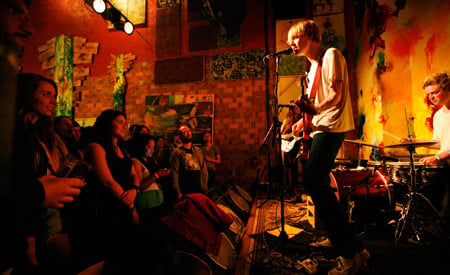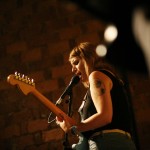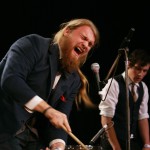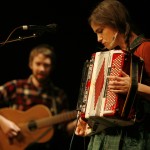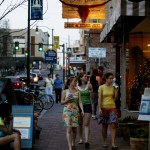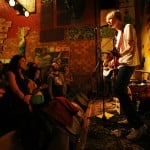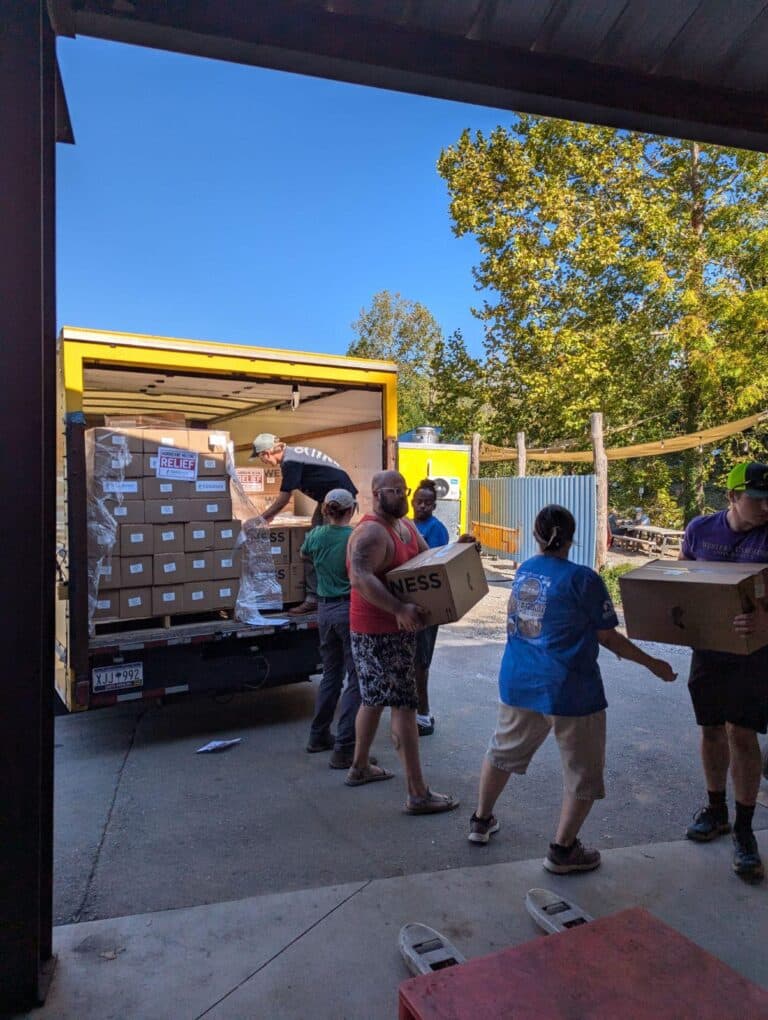Sixteenth birthdays are special, but when the celebration is for an indie music festival you can expect that the party will be like no other. This year will mark the 16th time that MACRoCk, a festival that takes place in Harrisonburg, Virginia, will have been held. For an event that came close to demise and was re-born, and for the city that hosts it, this milestone couldn’t be sweeter.
Harrisonburg, a town recently featured in BRO’s list of Best Mid-Sized Outdoor Cities, is a community centered around James Madison University, a state college with 20,000 students. In the 1990s many of the college’s student radio station staff made an annual pilgrimage to the College Music Journal festival held in New York City. Each year they became more disillusioned as the festival went from its indie grass roots to corporate sponsorship. The JMU students thought they could do better themselves.
In 1997 they organized and held the first Mid-Atlantic College Radio Conference (MACRoCk). The first year’s event featured a few bands in public venues on the college campus. The festival grew steadily over the next few years until it included over 120 bands and drew a crowd of 5,000 by the early 2000s. By this point MACRoCk had showcased talent the likes of Elliot Smith, Fugazi, Animal Collective, The Wrens, Coheed and Cambria, Avail, Dashboard Confessional, The Walkmen and War on Drugs. National touring acts would plan their yearly schedule so that they would be in Virginia in spring to play the event.
Then, like any good rock and roll saga, things started to come apart. The festival’s burgeoning size was beginning to stretch the campus’s capacity and the cost of renting the university’s facilities created a growing mountain of debt for the event.
“The relationship between the university and the festival became adversarial and the event lost compatibility with the campus,” recalled Andy Perrine, Associate Vice President for Communications for JMU and the event’s facility advisor during its peak in the early 2000s.
Following the 2006 festival organizers knew something had to change. They skipped 2007’s festival as they continued to reorganize. In 2008, they were back. The revived MACRoCk cut its ties with the university, incorporated as a not-for-profit and differed from its previous incarnations in one key way. It had moved a few blocks down the street from the JMU campus to downtown Harrisonburg.
The once vibrant downtown of the county seat town had suffered over the years. Like all towns Harrisonburg began to suburbanize with housing developments, chain stores and strip malls pulling businesses and their patrons from the downtown area and clustering them around the interstate. Then came a wave of urban renewal, a subtle way of describing the pulling down of historic buildings and making parking decks in their place. But in the last decade Harrisonburg’s downtown has staged a comeback, with former industrial spaces renovated into housing and retail and with original, local businesses cropping up in formerly empty store fronts.
The festival’s move meshed closely with the goals of Harrisonburg’s revitalization effort, known as the Downtown Renaissance, which was formed 11 years ago to inject life back into the downtown area. They quickly got the area designated a Virginia Main Street Community and made Harrisonburg the first in the state to have a Designated Arts and Cultural District. The new MACRoCk would draw crowds downtown, where the eateries are local, the art is original and the beer is craft.
“It was a win-win for the city and the festival,” said Perrine, who has a unique perspective because he was not only involved with MACRoCk, he was a founder and current board member of the Downtown Renaissance.
Festival regulars were worried the move would change the event and lose the momentum that MACRoCk had been building over the years. But the move brought new life to the festival. Free of the constraints and limitations of a public college the event has expanded its scope all while tailoring its size to the smaller theaters and stages of the downtown venues. It also found new sources of talent and support as it moved into downtown Harrisonburg.
“MACRoCk is now much more the Harrisonburg community than it is the JMU community,” said Marisa Cagnoli, a senior communications major at JMU who is the head of the student committee that runs the festival. Cagnoli noted that local businesses provide venues and donate to support the event, a local Web designer maintains MACRoCk’s Web site and local artists design the festival’s art.
In the years following its move MACRoCk proved the momentum was still there, featuring breakthrough acts like Best Coast, the Bowerbirds, Screaming Females, Bon Iver’s S. Carey and The Last Bison.
“MACRoCk keeps getting bigger but it keeps the same level of energy,” Perrine said. “It hasn’t lost its character and it’s not about the big name acts. It hasn’t been institutionalized or ruined by corporate sponsorship.”
The present festival has stayed true to its campus days. It’s is an eclectic mix of the top mid-Atlantic indie music talent presented with a socially conscious, DIY (do-it-yourself) attitude. MACRoCk has not only the sounds, but the sights and smells of an indie music festival. It also features informative panel discussions and an indie label expo. It’s the best of both worlds, a small, intimate festival with venues within walking distance mixed with a broad palate of music, from hip-hop and death metal to electronica and Americana, of a big festival. And at a time when festival tickets can cost you triple digits a two-day MACRoCk pass is still just $20 pre-ordered.
“Our goal is to expose people to the mid-Atlantic music scene,” Cagnoli said. “We do it with volunteers and that grass roots mindset, focusing on community and a DIY ethic. MACRoCk gives you the chance to experience what people are capable of doing on their own and what can be accomplished without corporate sponsorship.”
It all takes place in a unique environment. Typical downtown life in Harrisonburg goes on as MACRoCk takes place. Casual dinners mix with punk kids. Art aficionados stand shoulder-to-shoulder with indie rockers.
“MACRoCk is really a showcase of the best of what used to exist in a lot of places, which is a funky, gritty, down-to-earth scene,” Perrine noted.
This year’s MACRoCk will feature acts familiar to BRO readers from D.C. to Georgia, including Julianna Barwick, Dope Body and Cheap Time. The festival’s panels include a screening of From the Back of the Room, a film that follows the female DIY punk movement, and includes a discussion with director Amy Odem and rockers Michelle Northam of Sick Fix and Alissa Straiter of Passengers. Other panels will address topics from screen printing to running a record label.
“MACRoCk is never the same from year to year,” Cagnoli said. “The structure is the same, but not the content. Every person comes to MACRoCk and leaves with their own unique inspiration.”
It hasn’t been an easy journey for MACRoCk. The festival, like the music industry itself, has experienced its ups and downs. But by staying true to its roots and finding strength in the local community it has survived and thrived for 16 years. So for two nights in April a music festival will celebrate its new lease on life and a city’s downtown will be celebrating along with it.
This year’s MACRoCk will take place April 5 and 6. For more information, to see the line-up or to buy tickets visit www.macrock.org.
